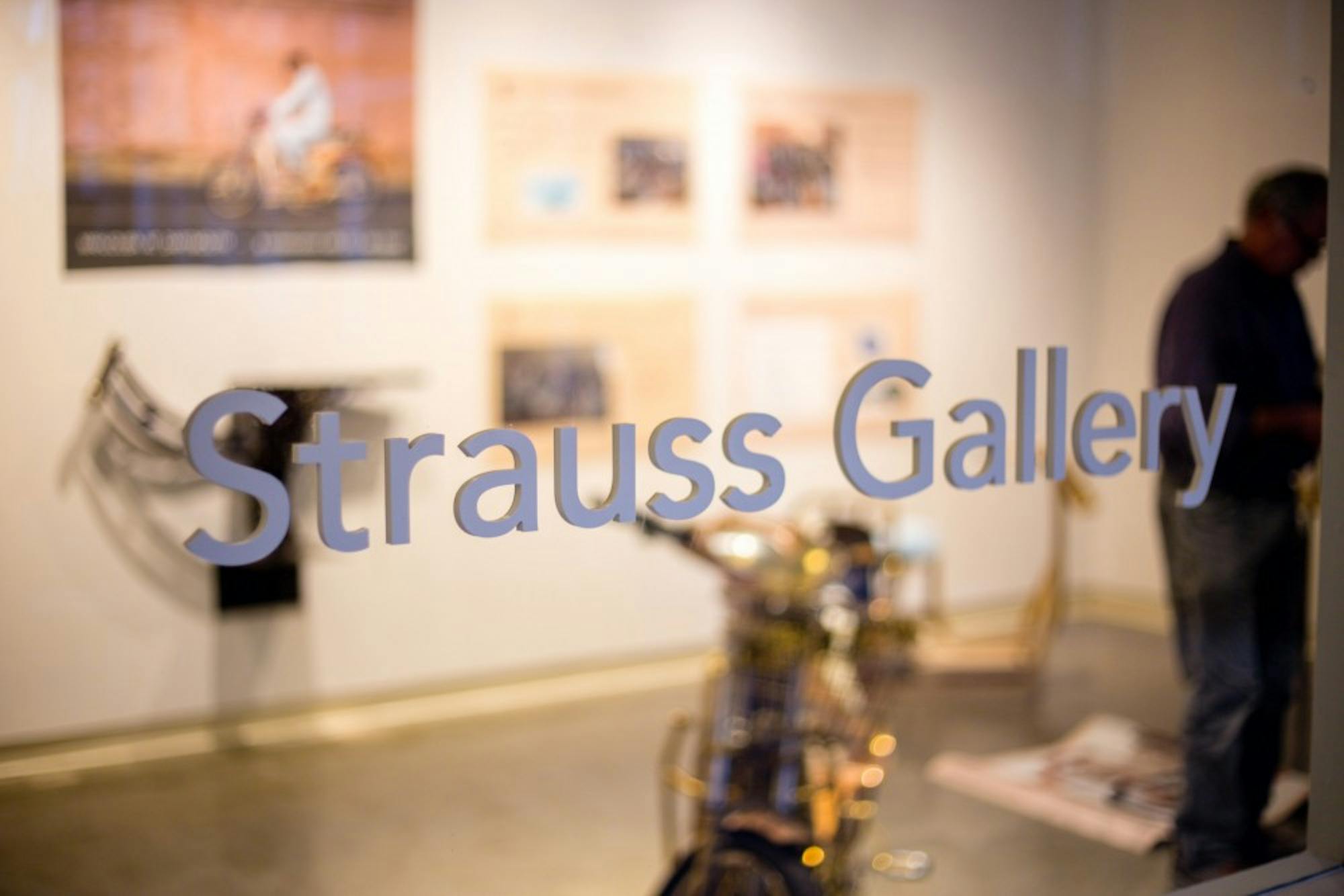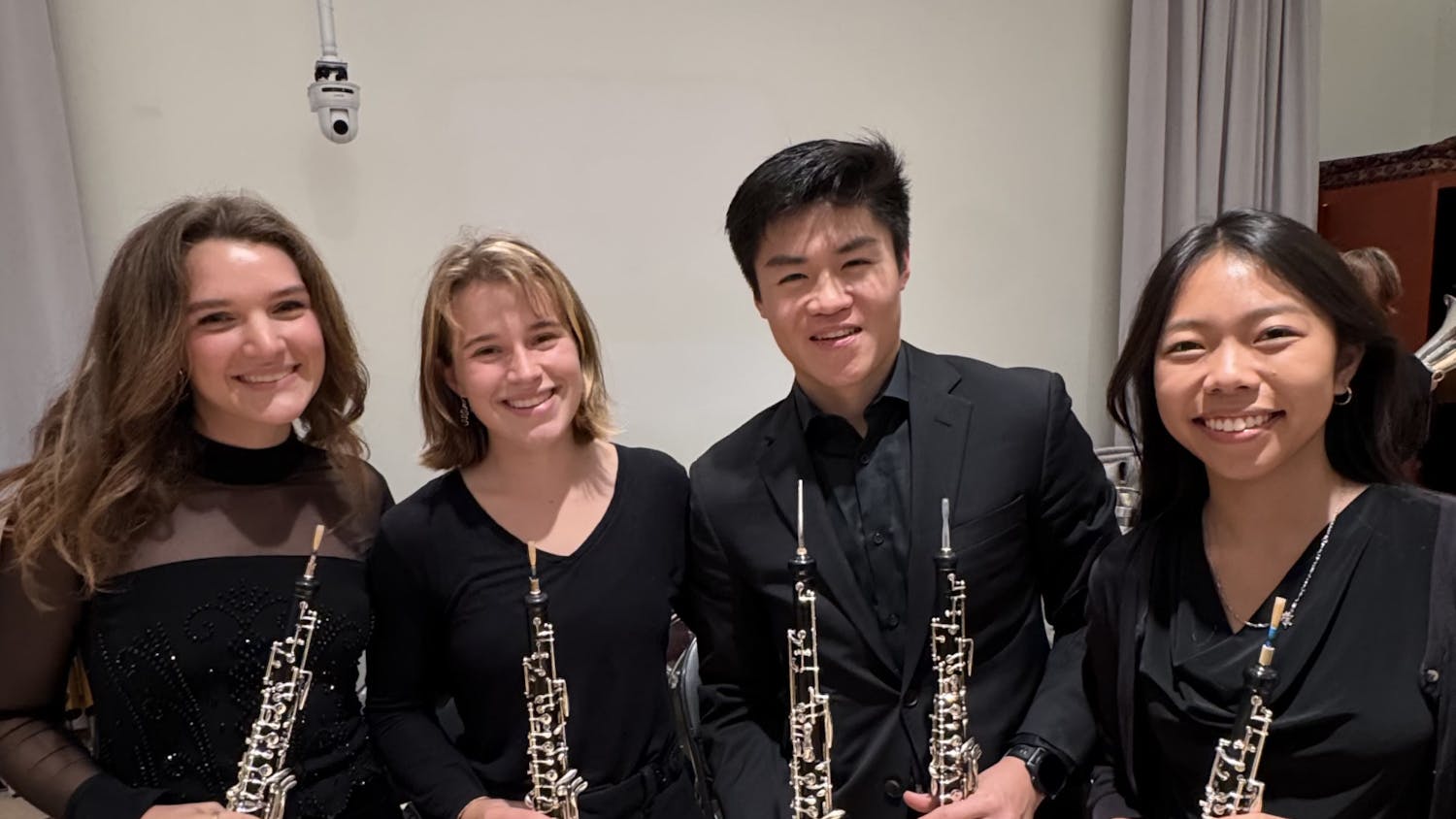Can a moped inspire change? Concept artist Eric Van Hove says yes.
Opening on Sept. 18, “Mahjouba at Dartmouth: a Collaboration with Eric Van Hove,” an exhibit that will open at the Strauss Gallery in the Hopkin’s Center, explores the College’s relationship with the artist and his new project, the Mahjouba Initiative.
The Mahjouba Initiative remakes cheap Chinese mopeds popular in Van Hove’s home of Marrakech, Morocco by using local artisans and materials. The moped runs on an electric engine, a far more ecologically sustainable model than the traditional explosive engine.
Mahjouba at Dartmouth, curated by studio art professor Jack Wilson, tells the story of Dartmouth and Van Hove’s relationship, as well as functioning as an exhibit of his artwork. Wilson said he began the process of curating last winter and was inspired by the the Majouba Initiative’s ability to cross disciplinary boundaries — the project involves students across campus, from arts to engineering. The exhibit will showcase the initiative’s “goals, explore its hybrid nature and connect creativity to real-world impact.
“What I think is really interesting and unique about this project is it crosses a lot of disciplinary boundaries — it’s initially an art project, Eric is an artist, he came as an artist-in-residence [and] his primary area of work is in sculpture, but when he started [the initative], it quickly spread out across cultural issues,” Wilson said.
Van Hove started this initiative two years ago with his first prototype, V12 Larakai. He and a team of four local craftsmen disassembled a traditional Chinese motorbike and reproduced it using materials like copper, steel, wood and bone. The result is a striking piece of functional sculpture art, a Mad Max-esque vehicle that actually works. The Hood Museum of Art acquired this first moped in 2016, and the College has since developed a relationship with Van Hove, who was an artist-in-residence in 2016 as well as a Montgomery Fellow over the winter of 2017. During his time at the College, Van Hove has interacted with students across campus to continue developing the Majouba Initiative.
“I think art has that potential, not so much because it’s intending to do so, but it has the potential to inspire,” Van Hove said. “And when somebody becomes inspired, there’s nothing they cannot do. You can inspire one guy, but you can also inspire a population, you can inspire a country.”
After the College purchased his first piece, Van Hove constructed three more prototypes that maintained the sculptural aesthetic of the original while cutting down on material and production costs. The second iteration resembles an elegant American chopper, welding together grit and sophistication with surprising grace. With funding from the College’s purchase, Van Hove focused on sourcing local materials, with everything coming from within a mile of the production site, and was able to expand his team of artisans. He then began to tackle the problem of mass production in order to bring Mahjouba to Moroccan markets.
The third prototypes employed 3D-printing, a large step in incorporating technology and cutting costs. This third version underpins Van Hove’s theme of hybridization. By bringing revolutionary technology like 3D-printing to traditionally low-tech enterprises like craft and sculpture, Van Hove both modernizes the crafting industry and increases the project’s economic viability.
With the fourth version of the moped, Van Hove looked outside Morocco for help, asking multinational companies to assist in aspects such as technical engineering and frame design.
Dartmouth students took on a more active role in the initiative starting around the third prototype. The Magnuson Family Center for Entrepreneurship (formerly the Dartmouth Entrepreneurial Network), the Tuck School of Business and the Thayer School of Engineering all worked on various projects to bring Mahjouba on the market. Arjun Bhatt ’20, a student active in the Center for Entrepreneurship, worked with a few other Dartmouth undergrads to investigate the viability of mass-producing Van Hove’s motorbikes. Bhatt was excited about the possibility of working with a conceptual artist and developing Van Hove’s initial ideas into something commercially feasible. The team of students worked to tell Mahjouba’s story, hoping to gain traction with Western investors. They also had the opportunity to travel to Marrakech in 2016, meet the artisans involved and view firsthand the project’s capacity for economic empowerment, calling the motorbikes a literal “vehicle for change.”
“I’m struck by how much they [the Moroccan artisans] believed in it,” Bhatt said. “It’d be very easy for them to do this job just for the money, but they all genuinely believed in the project.”
Van Hove also collaborated with the Tuck School of Business, where Tuck students evaluated Majouba’s viability. Engineering students, like Nat Healy ’20, have also helped Van Hove with the technical side. As a member of the Dartmouth Humanitarian Engineering Society, Nat spearheaded the project and traveled to Morocco in the summer of 2017, where he saw the impact of the project in a more tangible way.
“Working with the craftsmen and working with [Van Hove], seeing his drive for this project, really convinced me that it could be something that would last, that could make a difference,” Healy said.
Healy and his team initially worked on the transmission, braking system and locking system. They have since transitioned to improving the longevity of the moped, even testing using 3D-printed plastics. Their efficiency testing model is on display in the Strauss Gallery as a part of the exhibition.
While the Majouba Initiative is an artistic endeavor, Van Hove sees its potential for social and environmental change. Twenty percent of Moroccans are craftsmen, but the craft industry has taken considerable hits since the onset of cheap mass production, he said. Of Marrakech’s almost 500,000 craftsmen, many are struggling to find stable work. Van Hove said he envisions a world where craftsmen can produce products that everyday Moroccans will actually consume by using local materials and quality production techniques. Instead of selling their goods to tourists for cheap, these artisans will be able to make functional, high-quality art that grows the local economy. The project also includes an environmental benefit: by changing the traditional combustion engine to an electrical version, Van Hove’s motorbikes will decrease emissions and air pollution.
When in Marrakech, Bhatt said he gained a better understanding of the diverse values these artisans held and how something so ordinary as a motorbike could change the lives of so many. Healy also found his involvement with the project allowed him to step outside Dartmouth and become part of a larger movement of scientists, economists and artists. This underscores Van Hove’s purpose in the project — not just to create art, but to create a movement, art that inspires social, economic and environmental change.
“This whole thing could fail completely,” Van Hove said. “But even if it totally fails, it could still inspire a significant amount of people.”




